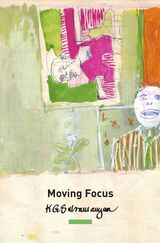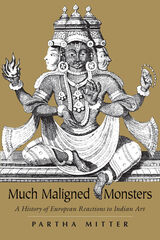
The rich and diverse cultures of India are represented in exquisite detail in this book, which begins with a simple question: what is Indian art? The answer is as complex as the history of a nation that is only sixty years old and a civilization that is one of the oldest in the world. The vocabulary of Indian art is syncretic and is shaped by a variety of religious influences such as Hindu, Muslim, and Buddhist. Persian, Turkish, Central Asian, Chinese, Japanese, as well as a host of European artistic traditions have also left their imprint on India. And the stunning topography of the subcontinent--the majestic Himalayas in the north, the dramatic deserts of Rajasthan, the fertile Gangetic plain, a southern coastline washed by the waves of the Arabian Sea, the Indian Ocean, and the Bay of Bengal--continues to shape the Indian artistic imagination.
Each thematically organized chapter in this book delves into such topics as religion and myth, epics, festivals, courtly and village life, and the natural world. The gorgeous close-ups of paintings, textiles, and sculptures in metal, ivory, and wood illuminate the aesthetics and workmanship, as well as recurrent motifs that are distinctly Indian. The objects are all part of the extraordinary Indian Art collection in the British Museum. The beauty of the smallest details are magnified and contextualized through the accompanying essays written by an expert on Indian art and culture.

Written between the early 1960s and the mid-1970s, the articles and lectures collected in Moving Focus reflect on some of the major concerns of the practicing artist and scholar of modern Indian art: tradition and modernism, the question of the image, and the use of art criticism. The collection also includes essays on the work of Rabindranath Tagore, Abanindranath Tagore, Binodebehari Mukherjee, Ramkinker Baij, and Amrita Sher-Gil. Together, they deal with the focal changes taking place in the contemporary art situation—a period of great significance in terms of cultural development, just about a decade and a half after India’s hard-won Independence—and seek to put them in perspective. The analytical essays of K. G. Subramanyan, one of India's most celebrated artists, remain as relevant and useful today as they were when this collection first appeared decades ago, and are perfectly suited to introducing the non-specialist to Indian modernism and its global concerns.
Subramanyan played a pivotal role in shaping India’s artistic identity after Independence. Mani-da, as he was fondly called, seamlessly blended elements of modernism with folk expression in his works, spanning paintings, murals, sculptures, prints, set designs, and toys. Beyond his visual artistry, his writings have laid a solid foundation for understanding the demands of art on the individual. In the year of his centenary, Seagull is proud to publish his writings in special new editions.


Serious study of the art of India began only in the nineteenth century. This small volume provides a masterly overview of the scholarship of the past century and a half.
Mr. Chandra's purpose is twofold: to help present–day students understand their scholarly heritage, and to encourage them to re-examine their own methods and assumptions. His histographical approach enables him to pay tribute to the great achievements of the pioneers in the field and also to notice the manner in which errors of fact and method have crept into some of the contemporary thinking and writing on the subject. Rather than attempt to discuss the writings of every scholar of note, he restricts himself to a few whose work, in his opinion, clearly represents the various stages of the development of the discipline. In analyzing their contributions, he concentrates on the broad methodological thrust of their work and not on the details of their conclusions.
The study of architecture is considered first, because it was regarded by the ancient Indians as the most important of the visual arts and was the earliest of the arts to receive careful, analytic treatment in modern times. Sculpture is taken up second, and last the study of Indian painting, the area in which the most remarkable progress has been made in the last twenty–five years. In the course of the discussion many topics of broad interest are touched upon, including the relation of art history to the other disciplines, problems presented by various methods of classification, iconography and iconology, the relevance of style, the meaning of form, and the connection between artists and patrons.
READERS
Browse our collection.
PUBLISHERS
See BiblioVault's publisher services.
STUDENT SERVICES
Files for college accessibility offices.
UChicago Accessibility Resources
home | accessibility | search | about | contact us
BiblioVault ® 2001 - 2024
The University of Chicago Press









